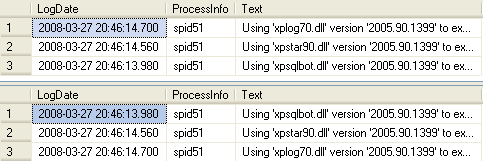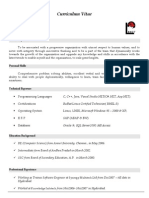Concsub Example With Double Quotes Null
On Unix-like operating systems, the cut command removes ('cuts out') sections of each line of a file or files.
Javascript handling treating double quotes as empty string. Ask Question 0. Trying to modify the following function to handle additional requests. Browse other questions tagged javascript null double-quotes or ask your own question. 3 years, 10 months ago. 3 years, 10 months ago. Featured on Meta. Dec 15, 2014 In this article we are going to discuss how to submit a concurrent request through the Unix shell script by using the CONCSUB utility. The CONCSUB allows us to submit a concurrent program to the concurrent manager from the Operating System level without actually logging on to Oracle Applications.
This document covers the GNU/Linux version of cut.
Syntax
Options

| -b, --bytes=LIST | Select only the bytes from each line as specified in LIST. LIST specifies a byte, a set of bytes, or a range of bytes; see Specifying LIST below. |
| -c, --characters=LIST | Select only the characters from each line as specified in LIST. LIST specifies a character, a set of characters, or a range of characters; see Specifying LIST below. |
| -d, --delimiter=DELIM | use character DELIM instead of a tab for the fielddelimiter. |
| -f, --fields=LIST | select only these fields on each line; also print any line that contains no delimiter character, unless the -s option is specified. LIST specifies a field, a set of fields, or a range of fields; see Specifying LIST below. |
| -n | This option is ignored, but is included for compatibility reasons. |
| --complement | complement the set of selected bytes, characters or fields. |
| -s, --only-delimited | do not print lines not containing delimiters. |
| --output-delimiter=STRING | use STRING as the output delimiter string. The default is to use the input delimiter. |
| --help | Display a help message and exit. |
| --version | output version information and exit. |
Concsub Example With Double Quotes Null In Excel
Usage Notes
When invoking cut, use the -b, -c, or -f option, but only one of them.
If no FILE is specified, cut reads from the standard input.
Specifying LIST
Each LIST is made up of an integer, a range of integers, or multiple integer ranges separated by commas. Selected input is written in the same order that it is read, and is written to output exactly once. A range consists of:
| N | the Nth byte, character, or field, counted from 1. |
| N- | from the Nth byte, character, or field, to the end of the line. |
| N-M | from the Nth to the Mth byte, character, or field (inclusive). |
| -M | from the first to the Mth byte, character, or field. |
For example, let's say you have a file named data.txt which contains the following text:
In this example, each of these words is separated by a tab character, not spaces. The tab character is the default delimiter of cut, so it will by default consider a field to be anything delimited by a tab.
To 'cut' only the third field of each line, use the command:
...which will output the following:
If instead you want to 'cut' only the second-through-fourth field of each line, use the command:
...which will output the following:
If you want to 'cut' only the first-through-second and fourth-through-fifth field of each line (omitting the third field), use the command:
...which will output the following:
Or, let's say you want the third field and every field after it, omitting the first two fields. In this case, you could use the command:
...which will output the following:
Specifying a range with LIST also applies to cutting characters (-c) or bytes (-b) from a line. For example, to output only the third-through-twelfth character of every line of data.txt, use the command:
...which will output the following:
Remember that the 'space' in between each word is actually a single tab character, so both lines of output are displaying ten characters: eight alphanumeric characters and two tab characters. In other words, cut is omitting the first two characters of each line, counting tabs as one character each; outputting characters three through twelve, counting tabs as one character each; and omitting any characters after the twelfth.
Counting bytes instead of characters will result in the same output in this case, because in an ASCII-encoded text file, each character is represented by a single byte (eight bits) of data. So the command:
...will, for our file data.txt, produce exactly the same output:
Specifying A Delimiter Other Than Tab

The tab character is the default delimiter that cut uses to determine what constitutes a field. So, if your file's fields are already delimited by tabs, you don't need to specify a different delimiter character.
You can specify any character as the delimiter, however. For instance, the file /etc/passwd contains information about each user on the system, one user per line, and each information field is delimited by a colon (':'). For example, the line of /etc/passwd for the root user may look like this:
These fields contain the following information, in the following order, separated by a colon character:
- Username
- Password (shown as x if encrypted)
- User ID number (UID)
- Group ID number (GID)
- Comment field (used by the finger command)
The username is the first field on the line, so to display each username on the system, use the command:
...which will output, for example:
(There are many more user accounts on a typical system, including many accounts specific to system services, but for this example we will pretend there are only five users.)
The third field of each line in the /etc/passwd file is the UID (user ID number), so to display each username and user ID number, use the command:
...which will output the following, for example:
As you can see, the output will be delimited, by default, using the same delimiter character specified for the input. In this case, that's the colon character (':'). You can specify a different delimiter for the input and output, however. So, if you wanted to run the previous command, but have the output delimited by a space, you could use the command:
But what if you want the output to be delimited by a tab? Specifying a tab character on the command line is a bit more complicated, because it is an unprintable character. To specify it on the command line, you must 'protect' it from the shell. This is done differently depending on which shell you're using, but in the Linux default shell (bash), you can specify the tab character with $'t'. So the command:
...will output the following, for example:
Examples
Output the third character of every line of the file file.txt, omitting the others.
Output the first three characters of every line of the file file.txt, omitting the rest.
Same as the above command. Output the first three characters of every line of file.txt.
Output the third through the last characters of each line of the file file.txt, omitting the first two characters.
Output the first field of the file /etc/passwd, where fields are delimited by a colon (':'). The first field of /etc/passwd is the username, so this command will output every username in the passwd file.
Output the first and sixth fields, delimited by a colon, of any entry in the /etc/passwd file which specifies /bin/bash as the login shell. This command will output the username and home directory of any user whose login shell is /bin/bash.
Related commands
Concsub Example With Double Quotes Null Meaning
grep — Filter text which matches a regular expression.
paste — Merge corresponding lines of files.